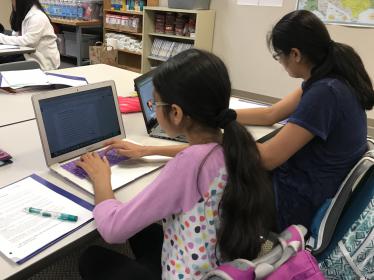How to Engage Middle Schoolers with an Interactive STEM Competition
As teachers, we always ask ourselves how to best prepare our students for an ever-changing world. We wonder, “will this help them later in life?”, “are these lesson plans age appropriate?”, or my favorite, “will this keep their attention?”
My sixth-grade students at Academy for Science and Design in Nashua, NH, have both science and an engineering technology class. Because of this, they have a unique opportunity to not only see how the world works but help build solutions. With ExploraVision, I am able to bridge those two classes in a way that helps show students tangible ways to ground their logic and think big.
ExploraVision allowed my middle schoolers to collaborate and focus on STEM project-based learning. Through the process, they learned about their chosen topic and loved being able to teach their fellow classmates about their findings. This provided the opportunity to make ExploraVision a cross-curricular project and further their understanding. Fortunately, I also have a very supportive team who helped make it possible for my students to be part of the competition in these two classes, which proved to be extremely beneficial.

Setting the Stage for ExploraVision Success
This is my second year involving the entire sixth-grade class in ExploraVision. Through my experience, I’ve found that the best way to help students brainstorm project ideas is to dedicate a class period to review and analyze different technologies.
My students begin by constructing a list of different types of technology that they can recall, typically about 10-20 items. We then take turns sharing ideas and combining them on the board for the class to see. Next, the students each choose two items from the master list, draw or print a picture based on these items and gather some information on both topics. Students return to class the next day ready to choose a topic with their group. The team then works together to make an initial timeline of the agreed-upon topic. I have found this method to be successful, as it is simple, effective and also stirs excitement and interest, preparing the students to dive right into ExploraVision.
If you don’t teach a STEM-related class, don’t let that discourage you from participating. Other teachers use ExploraVision as a cross-curricular project in language arts class, giving students the opportunity to strengthen their writing skills. I have always felt that communicating ideas clearly, creatively, and effectively, is extremely important in today’s connected world.
Download these powerful K-12 science lesson plans to get started!
About the Author
Bridget Phillips is a middle school science teacher at Academy for Science and Design in Nashua, New Hampshire. She loves to see her students get excited about science and technology through ExploraVision and has had several Honorable Mention winners. Learn more about Bridget and other ExploraVision ambassadors.